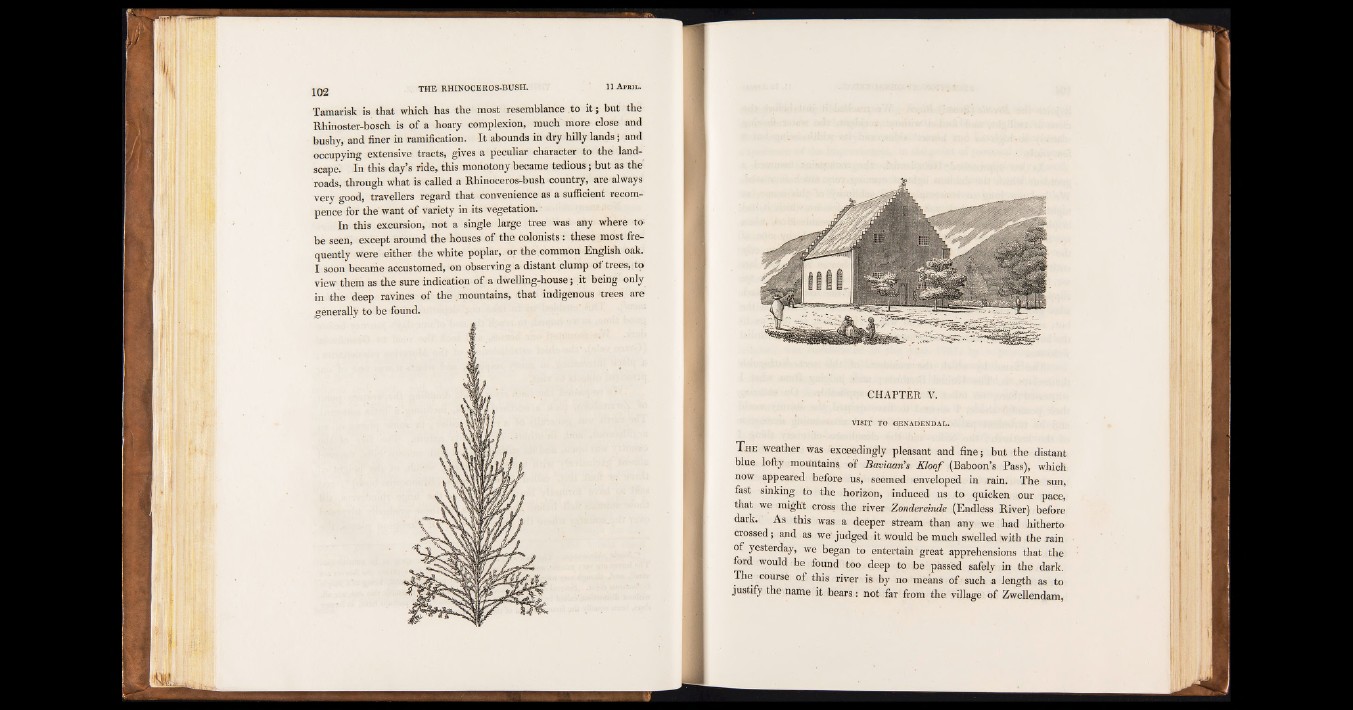
Tamarisk is that which has the most resemblance to it j but the
Rhinoster-bosch is of a hoary complexion, much more close and
bushy, and finer in ramification. It abounds in dry hilly lands; and
occupying extensive tracts, gives a peculiar character to the landscape.
In this day’s ride, this monotony became tedious; but a3 the
roads, through what is called a Rhinoceros-bush country, are always
very good, travellers regard that convenience as a sufficient recom-
pence for the want of variety in its vegetation.
In this excursion, not a single large tree was any where to
be seen, except around the houses of the colonists : these most frequently
were either- the white poplar, or the common English oak.
I soon became accustomed, on observing a distant clump of trees, to
view them as the sure indication of a dwelling-house; it being only
in the deep ravines of the mountains, that indigenous trees are
generally to be found.
CHAPTER V.
VISIT TO GENADENDAL.
T h e weather was exceedingly pleasant and fine; but the distant
blue lofty mountains of Baviaan's Kloof (Baboon’s Pass), which
now appeared before us, seemed enveloped in rain. The sun,
fast sinking to the horizon, induced us to quicken our pace,
that we might cross the river Zondereinde (Endless River) before
dark. As this was a deeper stream than any we had hitherto
crossed; and as we judged it would be much swelled with the rain
of yesterday, we began to entertain great apprehensions that the
ford would be found too deep to be passed safely in the dark.
The course of this river is by no means of such a length as to
justify the name it bears: not far from the village of Zwellendam,